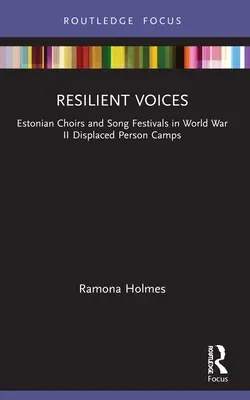Ramona Holmes
(Author)Resilient Voices: Estonian Choirs and Song Festivals in World War II Displaced Person CampsPaperback, 9 January 2023

Qty
1
Turbo
Ships in 2 - 3 days
Only 4 left
Free Delivery
Cash on Delivery
15 Days
Free Returns
Secure Checkout

Print Length
162 pages
Language
English
Publisher
Routledge
Date Published
9 Jan 2023
ISBN-10
1032016108
ISBN-13
9781032016108
Description
Product Details
Author:
Book Format:
Paperback
Country of Origin:
US
Date Published:
9 January 2023
Dimensions:
21.59 x
13.97 x
1.02 cm
ISBN-10:
1032016108
ISBN-13:
9781032016108
Language:
English
Location:
Oxford
Pages:
162
Publisher:
Weight:
222.26 gm